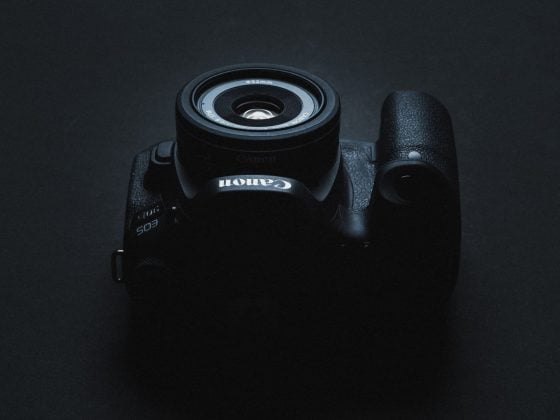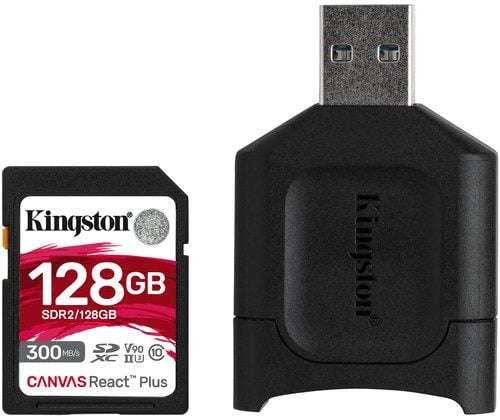So you are not misled by the title, this article is about buffer speeds in mirrorless cameras and mainly, what I’m seeing from the Sony A7rIV memory card speeds compared to the Nikon Z7. This information is based on my in-camera memory card benchmarks.
UHS-II vs XQD
I’ve just wrapped up some of my memory card benchmarks in the Sony A7rIV and noticed something very interesting and exciting.
Sony has dramatically improved the speed of UHS-II memory cards in their mirrorless cameras.
A few UHS-II SD cards in the Sony A7rIV are now clearing the buffer at a rate of about 200MB/s which is very similar to the XQD speeds in the Nikon Z7.
| Est. Buffer | Memory Card Speed | |
| Sony A7rIV | 4GB | 200.08MB/s |
| Nikon Z7 | 2GB | 207.96MB/s |
This is an unknown improvement we’re seeing out of the new Sony cameras that isn’t really a feature listed on any sort of spec sheet. People think UHS-II is UHS-II, but some cameras run UHS-II cards at slower speeds of about 100MB/s like the Canon EOS R, and some run them at faster speeds like the Nikon D850 and now the Sony A7rIV and most likely the Sony A9 II.
It may not seem like that big of a deal but it’s actually a huge quality of life improvement, especially considering the 61MP sensor inside the Sony A7rIV, and the workload that the Sony A9 II was built for.
This tells us that unless Nikon is capable of getting more speed out of CFexpress cards in their Z cameras, it was an epic mistake to go with a single XQD card since UHS-II is showing that it can match the speed Nikon is getting with XQD. Based on these results, I think just about everyone would take dual UHS-II over XQD.
The History of Sony UHS-I and UHS-II
Sony has a history of actually being the worst performing cameras when it came to memory cards. For years, actually, up until the Sony A7III and A7rIII their camera barely matched UDMA 4 speeds.
For whatever reason, Sony would not put a faster bus in their cameras, instead, they compensated by increasing the size of the buffer. Today they have the largest buffer in any mirrorless cameras at around 4GB in the Sony A7rIV.
| Est. Buffer Size | Memory Card Speed | |
| Sony A7r | 700MB | 35.46MB/s |
| Sony A7rII | 900MB | 35.27MB/s |
| Sony A7rIII | 2.7GB | 128.04MB/s |
| Sony A7rIV | 4GB | 200.08MB/s |
The problem with the big buffer is that the A7rII memory cards with that 42MP sensor could only read from the buffer at a speed of about 35MB/s. This made the camera painful to use because you were pretty much locked out of your camera until that buffer cleared.
With the latest release of the Sony A7rIV and the Sony A9 II, Sony has overhauled the guts of the cameras by adding dual UHS-II cards with actual competitive performance.
UHS-II specs are theoretically capable of going up to 299MB/s, although realistically they max out write speeds somewhere around 220MB/s in PCs with UHS-II readers. In my in-camera speed tests, I’ve yet to see them break 205MB/s which is probably maxing the capacity of the cards.
The cameras are actually writing faster than what I can measure because there is always a small processing delay before each shot gets to the card.
I could get more accurate results by testing with data from after the buffer filled which would use fewer shots, but I like to see more real-world performance so I can compare the processing impact on the writing process between cameras and brands.
Mirrorless Finally Match DSLR Tech . . . Sort Of
Today small UHS-II and XQD mirrorless cameras are still not capable of matching even older DSLRs when it comes to memory card write speeds and overall buffer performance with the more advanced memory cards like CFast and XQD.
While UHS-II speeds are very fast in the Sony A7rIV and as fast as XQD in the mirrorless space, the Nikon D850 still shows significant performance gains with XQD. However, the Sony A7rIV has finally caught up to the Nikon D850 with UHS-II performance.
It would seem like the bigger designs of the DSLRs do have some significant advantages of being able to push the electronics harder, faster and hotter.
It will be interesting to see what sort of performance gains we see when Nikon adds CFexpress support to their Z6 and Z7.
I personally doubt we’ll see very significant gains since it’s very likely Nikon only included single-lane PCIe 2.0 tech in their cameras and we are already seeing some sort of throttling in the Z7 compared to the D850 with XQD.
What I am wondering now is, will we see a push for Type-A CFexpress cards which are about the same size of SD cards, or will we see UHS-III memory cards soon?
Would it make sense to pair up the Type-B CFexpress cards with smaller Type-A CFexpress cards as the backup?
I would imagine memory card manufacturers would love for camera companies to yet again adopt another new format so we would all have to buy all new cards.
| **This website contains affiliate links. We will earn a small commission on purchases made through these links. Some of the links used in these articles will direct you to Amazon. As an Amazon Associate, I earn from qualifying purchases. |






